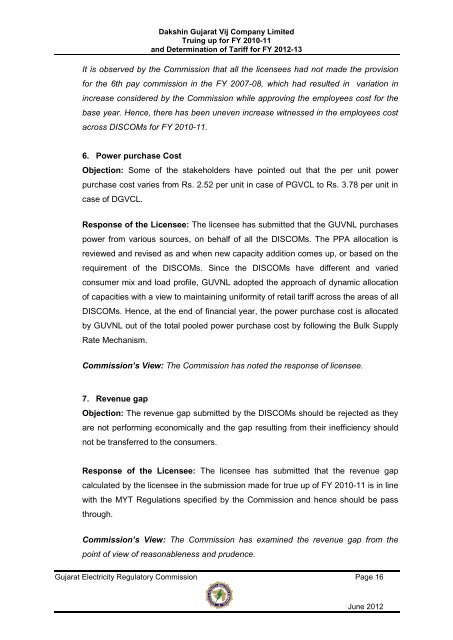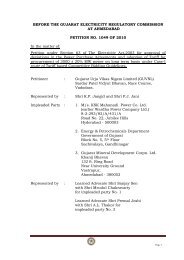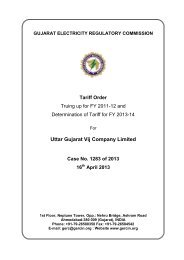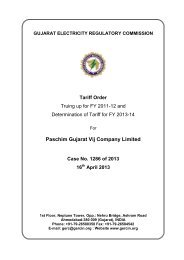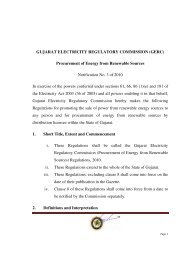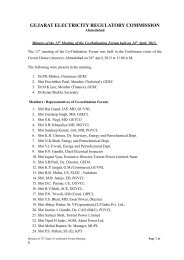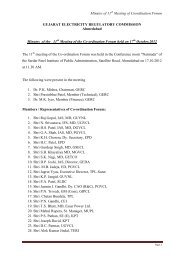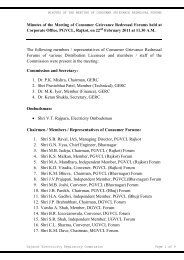Dakshin Gujarat Vij Company Limited Suo - Motu Case No ... - GERC
Dakshin Gujarat Vij Company Limited Suo - Motu Case No ... - GERC
Dakshin Gujarat Vij Company Limited Suo - Motu Case No ... - GERC
Create successful ePaper yourself
Turn your PDF publications into a flip-book with our unique Google optimized e-Paper software.
<strong>Dakshin</strong> <strong>Gujarat</strong> <strong>Vij</strong> <strong>Company</strong> <strong>Limited</strong><br />
Truing up for FY 2010-11<br />
and Determination of Tariff for FY 2012-13<br />
It is observed by the Commission that all the licensees had not made the provision<br />
for the 6th pay commission in the FY 2007-08, which had resulted in variation in<br />
increase considered by the Commission while approving the employees cost for the<br />
base year. Hence, there has been uneven increase witnessed in the employees cost<br />
across DISCOMs for FY 2010-11.<br />
6. Power purchase Cost<br />
Objection: Some of the stakeholders have pointed out that the per unit power<br />
purchase cost varies from Rs. 2.52 per unit in case of PGVCL to Rs. 3.78 per unit in<br />
case of DGVCL.<br />
Response of the Licensee: The licensee has submitted that the GUVNL purchases<br />
power from various sources, on behalf of all the DISCOMs. The PPA allocation is<br />
reviewed and revised as and when new capacity addition comes up, or based on the<br />
requirement of the DISCOMs. Since the DISCOMs have different and varied<br />
consumer mix and load profile, GUVNL adopted the approach of dynamic allocation<br />
of capacities with a view to maintaining uniformity of retail tariff across the areas of all<br />
DISCOMs. Hence, at the end of financial year, the power purchase cost is allocated<br />
by GUVNL out of the total pooled power purchase cost by following the Bulk Supply<br />
Rate Mechanism.<br />
Commission’s View: The Commission has noted the response of licensee.<br />
7. Revenue gap<br />
Objection: The revenue gap submitted by the DISCOMs should be rejected as they<br />
are not performing economically and the gap resulting from their inefficiency should<br />
not be transferred to the consumers.<br />
Response of the Licensee: The licensee has submitted that the revenue gap<br />
calculated by the licensee in the submission made for true up of FY 2010-11 is in line<br />
with the MYT Regulations specified by the Commission and hence should be pass<br />
through.<br />
Commission’s View: The Commission has examined the revenue gap from the<br />
point of view of reasonableness and prudence.<br />
<strong>Gujarat</strong> Electricity Regulatory Commission Page 16<br />
June 2012


